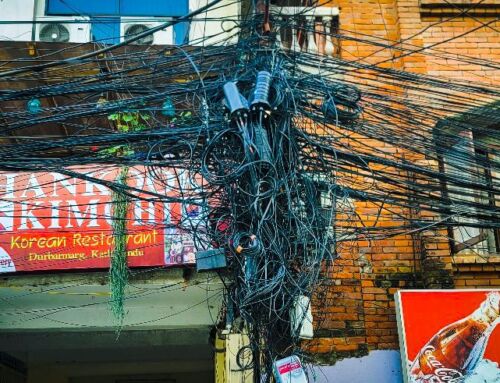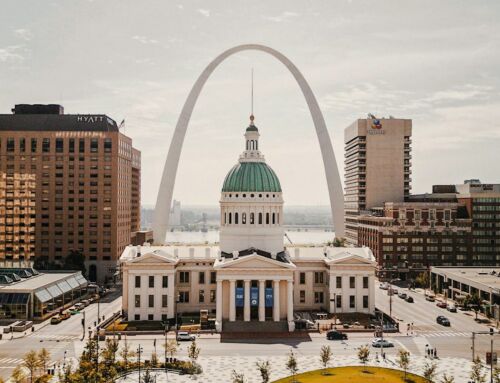View by Topic
Recent Articles
-
EPA Designates PFOA and PFOS as Hazardous Substances under Superfund LawSaturday, April 20th, 2024
-
Federal Government Finalizes New Efficiency Standards for LightbulbsSaturday, April 13th, 2024
-
2024 IECC is Final After Addressing Preemption IssuesSaturday, April 6th, 2024
-
Settlement Portends Broad Failure in Attempts to Ban Natural GasSaturday, March 30th, 2024
-
SEC Climate Disclosure Rule Stay and Venue Now in the 8th CircuitSaturday, March 23rd, 2024
View by Month/Year
“Green Building Law Update” Headlines
Recent Articles & News from
Stuart Kaplow’s blog
at GreenBuildingLawUpdate.com
- EPA Takes Action: PFOA and PFOS Now Hazardous Substances Under Superfund Law April 21, 2024
- Shedding Light on the Future: The Evolution of Lightbulbs in the Wake of New Energy Efficiency Standards April 14, 2024
- 2024 International Energy Conservation Code is Final After Addressing Preemption April 7, 2024
- Settlement Portends Broad Failure in Attempts to Ban Natural Gas March 31, 2024
Subscribe to the Green Building Law Update!
Stuart Kaplow brings his expertise and extensive experience to the table with his unique digital publication, "Green Building Law Update". Subscribers receive regular updates to keep them informed about important issues surrounding Environmental Law, Green Building & Real Estate Law, as well as the emerging demand for Environmental Social Governance (ESG).
Get fresh content through the lense of Stuart Kaplow's cutting-edge expertise, innovative commentary and insider perspective. Don't miss another issue! Subscribe below.

IgCC to be Mandatory for All Building in Montgomery County
Update. On November 15, 2016, the Montgomery County Council adopted Resolution 18-669, voting to extend time until June 30, 2017 for Council action on Executive Regulation 21-15, Adoption of the 2012 International Green Construction Code (IGCC). A Planning, Housing & Economic Development Committee work session will be scheduled at a later date.
On September 28, 2016, the County Executive of Montgomery County, Maryland submitted Executive Regulation 21-15, which adopts the International Green Construction Code 2012, to the County Council. If the Council does not approve or disapprove the proposed IgCC within 60 days after receiving it, the green code is automatically approved.
What is proposed is the boldest adoption of the IgCC anywhere.
The IgCC as modified by Montgomery County will cover all privately owned and public new building and additions of 5,000 square feet and larger. Single family detached and townhomes are not proposed to be included.
And despite that Montgomery County has long had a mandatory green building law, the IgCC is a great expansion over the prior law that requires newly constructed building or “extensively modified” that has or will have at least 10,000 square feet “must achieve a Certified level in the appropriate LEED rating system.” The County also offers a real property tax credit in varying amount (10-75%) and term (3-5 years) based on the type project and the rating it achieves LEED Silver or better.
The City of Gaithersburg, within Montgomery County, has adopted amendments to that building code that require increased energy and water efficiency requirements that drive building to LEED Gold and better. As a practical matter, throughout the County the market now requires Class A office building be LEED Gold if not Platinum.
But all of that is being repealed and the existing LEED building mandate being abolished, including it is expected Gaithersburg will revise its law migrating to the IgCC.
However, while the existing law captured only extensive renovations, the new Regulation exempts renovation of existing buildings completely when the enactment deletes Chapter 10 of the IgCC.
Note, that Montgomery County is not adopting the current 2015 version of the IgCC. While the IgCC 2015 was approved 2 years ago, that version is not approved for use by the Maryland Department of Housing and Community Development which requires each jurisdiction in Maryland use the same edition of the same building codes.
It is significant that since July 1, 2015 all building in Montgomery County must comply with the International Energy Conservation Code 2015, with its energy consumption reduction requirements and many of those now existing requirements ameliorate the impacts of the proposed (4 year out of date) IgCC 2012. But the County amended the IgCC to use a zEPI scale score of 50 (the baseline from the more efficient IgCC 2015) for energy efficiency but still approximately 5% below ASHRAE 90.1-2013.
After more than 2 years of seeking public comment, County staff made few if any changes from their first draft and is still proposing a modest number of amendments to the form IgCC. Most are being positively received and if there is a criticism, it is that they do not go far enough when elements of the code are being moved to Appendix A and made electives. Building of less than 10,000 square feet must include a minimum of 2 Appendix A electives, up to 20,000 square feet 3 electives and greater than 20,000 square feet 4 electives.
It is also suggested that requiring diversion of 50% of demolition debris and diversion of 75% on construction debris is below what the marketplace does today.
Others point out the Regulation is internally inconsistent when it deletes all provisions requiring rooftop urban heat island effect mitigation, but leaves in place ‘non roof’ hardscape heat island mitigation (which has been criticized as junk science). To their credit the County attempts to correct some of the industry bias in the form IgCC when, in pursuit of that non roof heat island effect mitigation, when it reduces the IgCC mandated heat island mitigation “for not less than 50% of site hardscape” to “less than 40%”. The State of Maryland which approved the IgCC for use on Maryland capital budget funded projects (that includes Montgomery County public schools) reduced that percentage to 30% and Baltimore City addressed the flaw by permitting the use of “porous asphalt pavement” in addition to pervious concrete.
As bold as this is, some have suggested that Code officials have not gone far enough with the proposed amendments. As amended this enactment of the IgCC is much more restrictive and has higher first costs for most building types when compared to LEED v 2009, but such is likely not the case when compared to LEED v4.
As progressive as this Regulation appears, Montgomery County is one of a very limited number of jurisdictions in this country mandating construction of both private and public buildings must be green. The City of Rockville, within Montgomery County, adopted mandatory use of the IgCC effective July 1, 2015, however, also allows as an alternative ASHRAE 189.1. Montgomery County will be the only jurisdiction in the nation requiring all building comply with the IgCC without alternatives. While Baltimore and DC have similar mandatory IgCC laws, they additionally permit alternative compliance paths, like LEED Silver certification, compliance with ICC 700, and Enterprise Green Communities verification. Recognizing that today Montgomery County requires use of LEED, but under the proposal will in the near future only allow use of the IgCC, this Regulation is controversial.
It is worthy of note that very few jurisdictions have adopted the IgCC with only a handful of IgCC new construction projects having been completed. Not a single IgCC building has yet to be constructed in the City of Rockville, nor under the State of Maryland or Baltimore City IgCC regulatory schemes (i.e., instead each of those two regulations allow alternative compliance paths and most, if not nearly all new construction is opting for LEED). Some are suggesting with this use of the IgCC Montgomery County will increase first costs with little or no improved environmental efficacy.
While on its face strikingly bold, this rehashing of the 2012 IgCC (which was drafted in 2010) fails in terms of outdated technology, doesn’t respond to the market in suburban Maryland that demands Class A building be LEED Platinum, and will not please Mother Nature when it does not in meaningful ways address the pressing environmental matters of the day from health and wellness within buildings to potable water.
Many hundreds of LEED projects have been registered in Montgomery County, putting the county near the very top of the list for green construction in the U.S. by county and within the County, Bethesda and Rockville top of the LEED list for municipalities of less than 100,000 people across the country.
The ramifications of this IgCC enactment are of national import. Montgomery County is not only the most populous county in Maryland, it is one of the most environmentally progressive jurisdictions in the nation. It has also been ranked by Forbes as the 10th richest in the United States and accordingly first construction costs do not have major economic implications. Politically, the County is heavily Democrat with a term limited County Executive. Observers are noting, if this anti-LEED sentiment can manifest it itself here it can happen anywhere.
The effective date for mandatory use of the IgCC is not clear. The IgCC was promulgated as an Executive Regulation type 2 under the local code which provides that the regulation becomes law unless “disapproved” by the County Council within 60 days of having been transmitted and the effective is the next day (i.e., 61 days from September 28, 2016?).
And staff has told the County Council there will be “a 180 day optional pathway for projects that are in process” in lieu of grandfathering projects in development review, but that is not within the Resolution.
But note, this Regulation will also require a bill by the County Council to repeal and reenact the County existing green building law in County Code chapter 8, article VII.
The business community is expected to lobby the County Council, including such that the reenactment of the green building law include not only the IgCC but also an alternative compliance paths for LEED Certification, and ameliorate the inconsistencies in urban heat island by moving the matter to an Appendix A elective.









